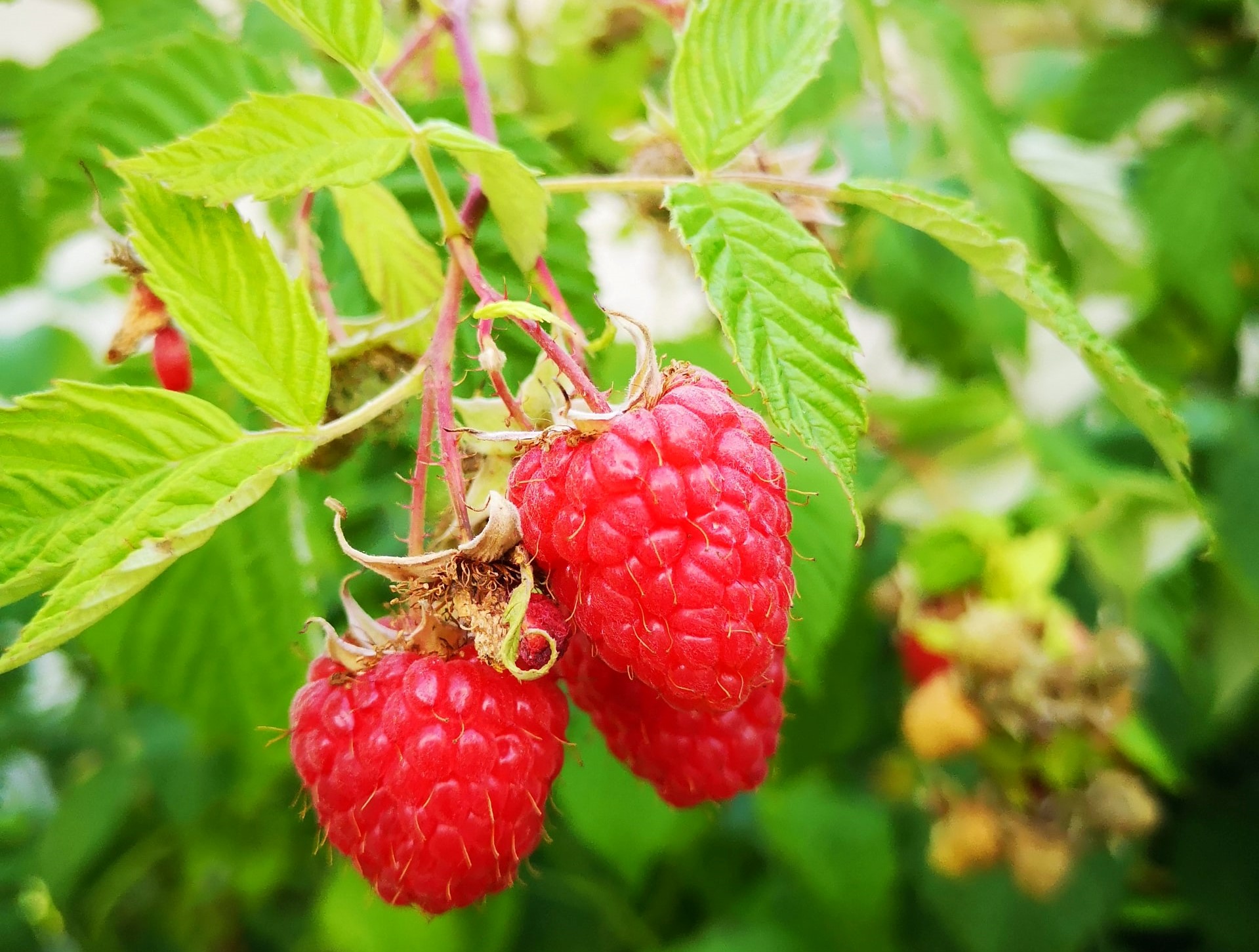Usable Value of Raspberries
Raspberries, along with strawberries, are one of the most significant fruit crops in the berry group. The raspberry fruit, in terms of composition, appearance, and taste, is considered one of the most prized fruits. One of its most important characteristics is its high vitamin C content. The fruit is used as table fruit but also for processing. Since the development of transportation technology and refrigerated storage, the use of fresh fruit has become increasingly important.
Raspberries can be used to make excellent juices, jellies, drinks, and sorbets. Often, red currant juice is added to enhance the tartness. Raspberry wine is delicate and has an excellent color. Raspberries can also be frozen, but they partially lose their texture in the process. Raspberry leaves and fruits are also used for making teas.
Nutritional Value of Raspberries
Nutritional value per 100 g:
- Energy value: 220 kJ (53 kcal)
- Total carbohydrates: 11.94 g
- Sugars: 4.42 g
- Dietary fibers: 6.5 g
- Total fat: 0.65 g
- Total protein: 1.2 g
Vitamins:
- Thiamine (B1): (3%) 0.032 mg
- Riboflavin (B2): (3%) 0.038 mg
- Niacin (B3): (4%) 0.598 mg
- Pantothenic acid (B5): (7%) 0.329 mg
- Vitamin B6: (4%) 0.055 mg
- Folate (B9): (5%) 21 µg
- Choline: (3%) 12.3 mg
- Vitamin C: (32%) 26.2 mg
- Vitamin E: (6%) 0.87 mg
- Vitamin K: (7%) 7.8 µg
Minerals:
- Calcium: (3%) 25 mg
- Iron: (5%) 0.69 mg
- Magnesium: (6%) 22 mg
- Manganese: (32%) 0.67 mg
- Phosphorus: (4%) 29 mg
- Potassium: (3%) 151 mg
- Zinc: (4%) 0.42 mg
Other:
- Water: 85.8 g
Harvesting Raspberries
Raspberries are very delicate fruits, and their harvest must be well-organized to ensure they are harvested on time and sold in the best condition.
Harvesting begins when the fruit starts to separate from the stem, i.e., when the fruit attains the characteristic color of its variety. Since not all fruits ripen simultaneously, harvesting is done in several stages. The harvest period for single-bearing varieties is 15-20 days, while for ever-bearing varieties, it lasts about a month. Harvesting typically occurs in mid-June and ends in mid-July. The largest quantities are harvested at the end of June, but this depends on the specific variety.
Raspberries are best harvested in the morning, in relative shade, and sometimes in the evening if the fruits are to be sold the next day as table fruit. Harvested fruits should be transported to cool storage areas. If the fruits are to be eaten fresh or frozen, they can be picked a day or two earlier. The fruits are picked directly into the packaging in which they are transported to the market. When harvesting for processing, enameled containers are usually used, and the fruits are then placed in special transport barrels.













































